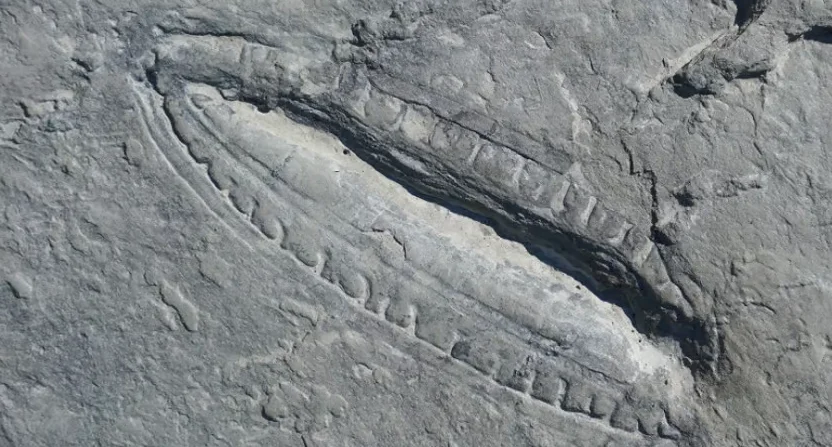The remains of the oldest food in history have been identified. In the fossils of Kimberella, a strange snail-like creature that lived half a billion years ago, scientists found food molecules preserved in the gut that show what and how these ancient animals ate.
The Ediacaran era is when evolution really branched out and began experimenting with complex multicellular life about 550 million years ago. Some of our earliest animal ancestors date back to this time and shared the world with truly bizarre creatures unlike anything living today. But there are few details about how these animals lived.
In a new study, researchers from the Australian National University (ANU) investigated the dietary habits of Kimberella, one of the most advanced life forms of its time. It looked a bit like a mollusk, with a shell-like outer body that could grow up to 15 cm (6 in) long.
The ANU team discovered phytosterol molecules preserved in the nucleus in fossilized specimens of kimberella from 558 million years ago. This molecule is a type of fat found in plants, which indicates that it is the remains of the animal’s last meal. Of greater significance of the find is that the Kimberella had a mouth and intestines – highly innovative features for its time – and digested food in a manner similar to modern animals.
“Scientists already knew that Kimberella scraped off algae that covered the seafloor, leaving traces of food, suggesting that the animal had a gut,” said Professor Jochen Brock, co-author of the study. “But after analyzing the molecules in Kimberella’s gut, we were able to determine exactly what she ate and how she digested the food. Kimberella knew exactly which sterols were right for her and had an advanced fine-tuning system to filter out everything else.” A 558-million-year-old Dickinsonia fossil that turned out to have no guts
He found clues to Kimberella and other digestive methods. A tuber-like creature named Calyptrina had a similar gut structure and diet, but no sterol molecules were found in Dickinsonia fossils. The animal looked like a large, ribbed pancake growing up to 1.4 m (4.6 ft) long, and the team said it had no mouth or intestines. Instead, it probably absorbed food with its broad body as it moved along the seafloor. The research is helping scientists trace the evolution of the earliest animals and how they are related to their deep descendants today. Source
Source: Port Altele
